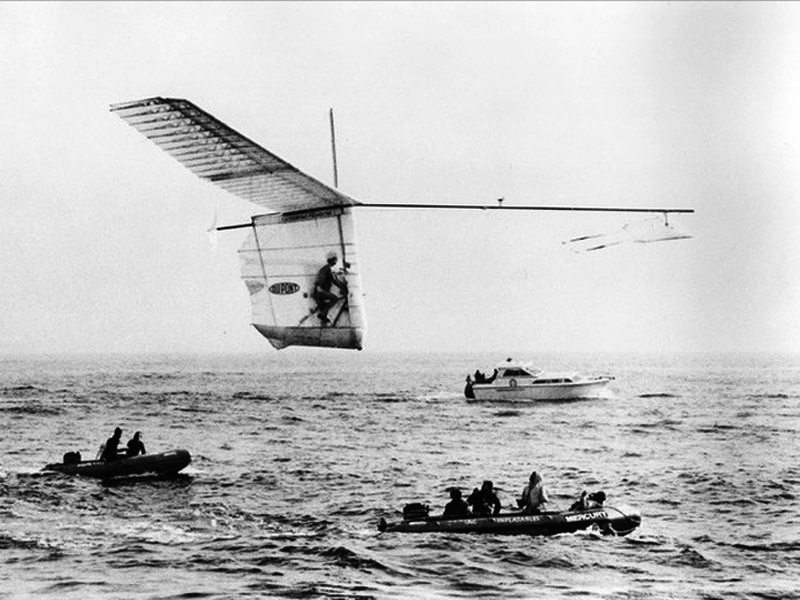As a kid, I devoured the pages of Popular Science magazine and was fascinated by the quest for human-powered flight: Was a flying bicycle possible?
In the mid 1970s, I read that aerospace engineer Paul MacCready had assembled a team to build a large, lightweight, human-powered aircraft that could be rapidly repaired and redesigned. In 1977, after multiple iterations, cyclist Bryan Allen flew MacCready’s Gossamer Condor around a one-mile figure-eight course to win the first Kremer prize. Two years later, Allen flew MacCready’s improved Gossamer Albatross 22 miles across the English Channel to win the second Kremer prize.
Made with a carbon fiber frame and polystyrene ribs covered with transparent plastic film, each Gossamer aircraft had a long tapering wing behind a large horizontal stabilizer. Weighing less than the pilot-engine, the required power was only about 0.3 kW (or 0.4 hp). Currently, an outstanding Kremer prize is to fly a 26 mile marathon course in under an hour.

Bryan Allen powers and pilots Paul MacCready’s Gossamer Albatross across the English Channel in 1979.

Allen flies MacCready’s Gossamer Albatross II in NASA tests in 1980.

Thanks, Mark! I enjoy reading your posts as well.